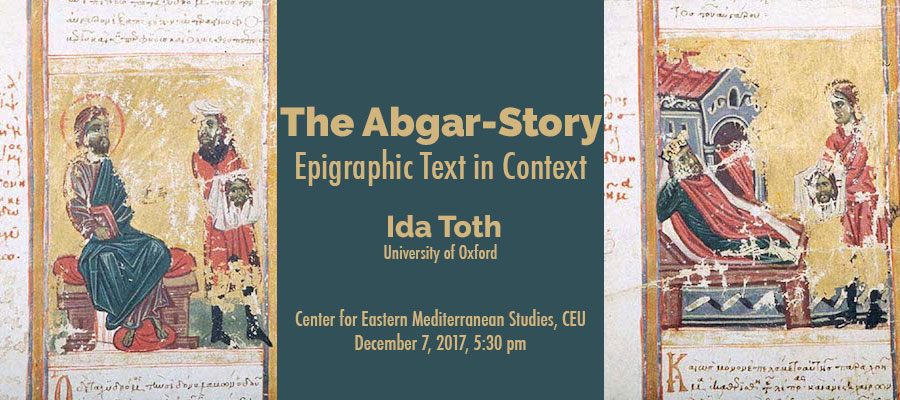The Abgar-Story—Epigraphic Text in Context, lecture by Ida Toth, Oxford, Center for Eastern Mediterranean Studies, Central European University, December 7, 2017, 5:30 pm
The extent of the popularity of the Abgar-Story would be difficult to exaggerate: describing an episode in the life of Jesus of Nazareth, this early Christian narrative has made significant forays into the realms of apocryphal literature, ecclesiastical history, religious controversies, visual culture, political ideology, and popular beliefs – to name but a few. A lively history of creative adaptation associated with this para-scriptural legend is abundantly attested in the Syriac, Greek, Coptic, Armenian, Latin, Persian, Arabic, and Slavonic linguistic areas. Its uninterrupted, if meandering, transmission offers much scope for exploring how different historical periods and cultural milieus (re-)appropriate, (re-)imagine, and (re-)interpret shared source material. Focusing primarily on the extant Greek tradition, which is by far the most elaborate and best preserved, the talk discusses the importance of public display for the diffusion of the Abgar-Story. It sheds light on the issues that find themselves in the core of modern epigraphic research: the interplay between writing, inscribing, depicting and enacting, and the effect that these practices, individually and taken together, had on late antique and Byzantine reading and viewing publics.
Ida Toth is Senior Instructor and Lecturer and Research Fellow at Oxford University, where she convenes graduate courses in Medieval Latin, Byzantine Greek, and Byzantine Epigraphy. She is a historian of Byzantine literary culture with research interests in rhetoric, narrative prose, and public display of texts. She has published on late Byzantine imperial orations, on the medieval Greek and Slavonic transmission of wisdom literature, and on Byzantine inscriptional traditions in the seventh, eleventh and thirteenth centuries. Ida is a member of the Executive Committee of the Society for the Promotion of Byzantine Studies, and, together with Andreas Rhoby, coordinates the International Commission for Byzantine Epigraphy (AIEB).
